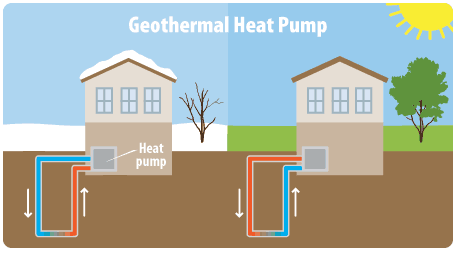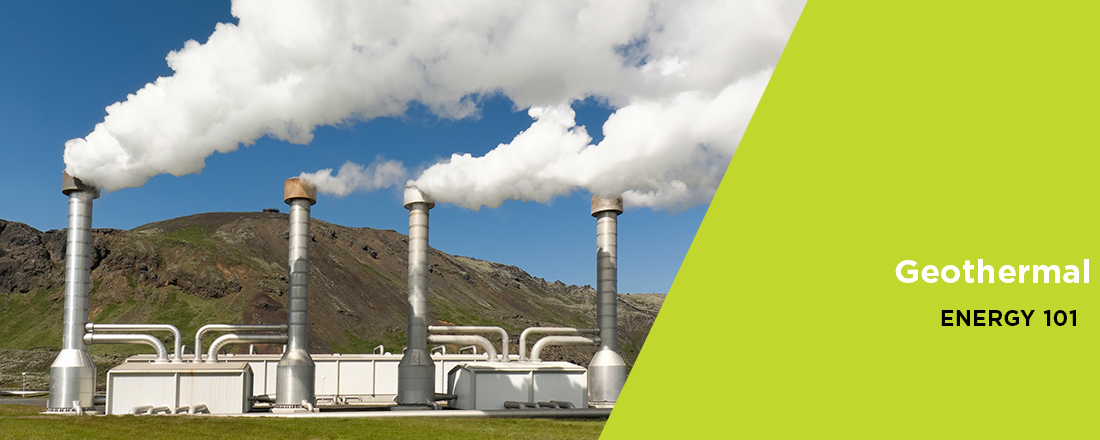MCE’s Energy 101 Series focuses on the why and how of renewable energy so that you can learn more about concepts like the benefits of biomass and the science behind solar. Looking for more? Check out the links in this blog to read more about Energy 101 or to dive deeper into our Energy Expert series.
Volcanoes and geysers are evidence of the abundance of energy that exists just below the Earth’s surface. Up to 5% of California’s electricity comes from harnessing the power of the Earth’s core, known as geothermal energy. In this blog, we break down the basics of how geothermal energy is harnessed and turned into renewable electricity.
What is geothermal energy?
Geothermal energy is thermal energy generated inside the Earth. Radioactive elements are constantly decaying within the Earth’s core and mantle. This process produces heat, which radiates toward the Earth’s surface. During that process, the heat meets naturally occurring geothermal reservoirs, which often contain hot water or steam. We use these hydrothermal resources to harness geothermal energy.
Advantages of Geothermal Energy
- It’s renewable and has a low carbon footprint.
- Unlike variable renewable sources like wind and solar, it can provide stable energy 24/7, and so it’s a good base load resource.
- As we develop more advanced technologies, the geothermal industry has potential for growth and exploration.
Disadvantages of Geothermal Energy
- The location of geothermal power plants is restricted because the plants rely on geothermal reservoirs.
- Drilling underground can sometimes cause the release of trapped greenhouse gases. Newer binary cycle power plants help us avoid this risk.
How is geothermal energy converted into electricity?
Geothermal power plants run on hydrothermal resources, such as water and steam. To access these resources, geothermal power plants drill into underground geothermal reservoirs. The hydrothermal resources are piped to the surface, where they’re used to spin a turbine connected to a generator. The three main types of geothermal power plants are flash steam, dry steam, and binary cycle.
Flash Steam
Flash steam plants are the most common type of geothermal plant. They use underground reservoirs of extremely hot and highly pressurized water. The pressure pushes the water to the surface, where it’s collected in a flash tank and boiled into steam, which spins a turbine. Any leftover water is sent back to the underground reservoir.
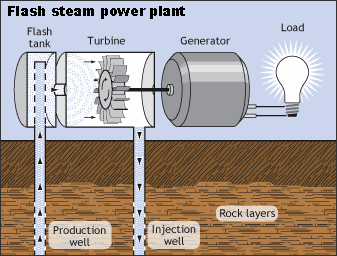
(Graphic: U.S. Energy Information Administration)
Dry Steam
Dry steam plants use steam directly from the underground reservoir to spin a turbine. Leftover steam is condensed and returned to the reservoir as water. The first geothermal power plant was a dry steam plant.
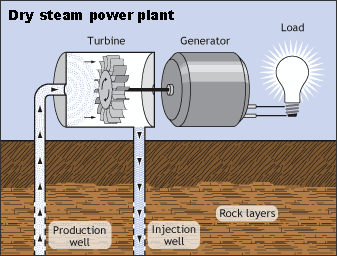
(Graphic: U.S. Energy Information Administration)
Binary Cycle
Binary cycle plants use hot water from the reservoir to heat a secondary liquid with a low boiling point. Steam from this secondary liquid is used to spin a turbine. The geothermal hot water never directly meets the secondary liquid or the turbine. Binary cycle plants are the newest type of geothermal plant. They can operate at lower temperatures and are more environmentally friendly.
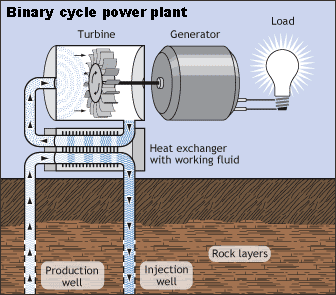
(Graphic: U.S. Energy Information Administration)
Where are geothermal plants?
Geothermal power plants rely on geothermal reservoirs close to the Earth’s surface. The reservoirs are often found in active geothermal regions along tectonic plate boundaries. The regions include the Ring of Fire and hotspots across the world from Iceland to Indonesia. Geologists can test for geothermal reservoirs by drilling into the ground and measuring the temperature.
What are geothermal heat pumps?
Heat pumps are another way we use the power of geothermal energy. Geothermal heat pumps help maintain a stable temperature by transferring heat between the building and the Earth. The systems circulate water or a refrigerant through a long looped underground pipe. When the pump is in heating mode, heat from the Earth moves up to the building. When the pump is in cooling mode, heat is pumped down and given off into the Earth. Geothermal heat pumps are environmentally friendly and energy efficient.
